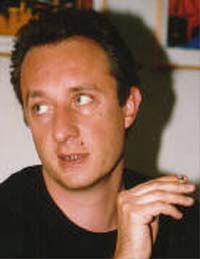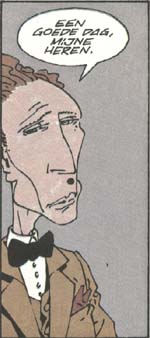| 
Say Saint-Luc, and you immediately think of Andreas,
Schuiten, Sokal, Berthet, Forster, Duveaux, Goffin, Cossu.
All from the same generation. Have any people of Saint-Luc
become famous before or after that?
Andreas: There was a female draftsman,
Antoinette Collin, who made things for Robbedoes.
I think she has stopped. I think we were the first generation
of Saint-Luc. In my year were Duveaux and me, in the next
year Antonio Cossu, Philippe Foerster and Philippe Berthet,
and the year after that François Schuiten and Goffin
and later several others: Séraphine,
Chantal de Spiegeleer. Who came after that I don't remember.
When Schuiten came to Saint-Luc, we didn't understand
what his purpose was. He had already published a short
story in Pilote and was technically more advanced than the others.
| |

